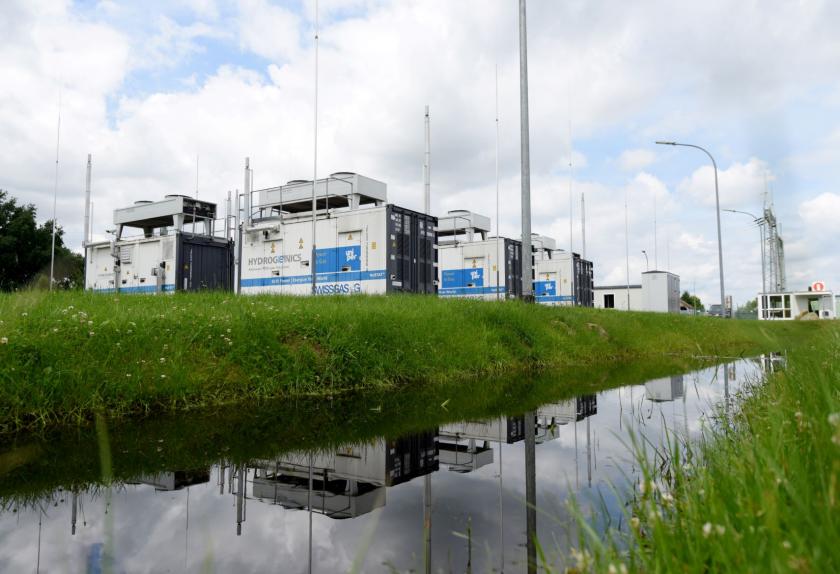
12.01.2021
A combined tendering model can help achieving Germany’s goals for electrolysis capacities as defined in the National Hydrogen Strategy. This is the result of a study undertaken by the BBH group on behalf of the Initiative Erdgasspeicher (INES). The study describes how three gigawatt of new hydrogen electrolysis capacity can be subsidized in a way that supports grid stability.
The study was presented to media representatives by INES’ Management Director Sebastian Bleschke and BBH authors Roland Monjau and Dr. Christian Dessau on January 12, 2021 in a digital event.
Sebastian Bleschke commented the study: “The presented combined tendering model is very convincing as it binds the market launch of electrolyzers to a grid-friendly operation right from the start. Thereby, the model starts off where the energy transition in the electricity sector poses hefty challenges. But our proposal does not only relieve electricity grids, it also incentivizes an efficient subisidizing mechanism. The reason: Profit contributions from system services do not have to be subsidized.”
Roland Monjau, Partner Counsel at BBH Consulting, said: “We are glad to bring a new contribution into the debate on implementing the National Hydrogen Strategy by this study for INES. Our proposal shows that efficient subsidies and value added for the energy system can be a winning team. An integrated approach is especially important for sector-coupling technologies as hydrogen electrolysis to lay the foundation for an intelligent future energy system early on. The study also proves that its legal implementation is very straightforward and can be initiated quickly.”
Integrating state aid with a grid-friendly operation the study suggests the following approach: Firstly, there will be an auction for adjustable loads in the context of system services conducted by Transmission System Operators. Potential operators of electrolyzers can take part and if successful close a pre-deal. This deal ensures an investment contribution for the planned facility as well as the allowance to take part in weekly system services auctions as agreed before. Secondly, there will be a state-led auction to subsidize hydrogen production. 150 megawatt will be auctioned twice a year over a period of ten years – thus summing up to three megawatt. The system services auction thereby allows operators with a pre-deal to bid not only cost-efficiently but also grid-friendly.
Thus, the study integrates measures 2 and 3 of the National Hydrogen Strategy and allows building up three gigawatts electrolysis capacity by 2030 in a competitive environment. The federal government plans to install five gigawatts new capacities in the upcoming decade. The amount addressed by the study are supposed to be installed outside the transportation sector. Two more gigawatts electrolysis capacity are planned to be installed by implementing the Renewable Energy Directive II in the transportation system.
Hydrogen ist he only option to decarbonize certain sectors as industry and transportation. Moreover, renewable energy can be stored in large volumes over long periods of time when stored as hydrogen in gas storage facilities. Only this storage solution makes carbon neutrality a real option in the future. The German government aims to drive the market launch of this technology option and wants to enable the energy transition.
Image: Uniper SE
Downloads: